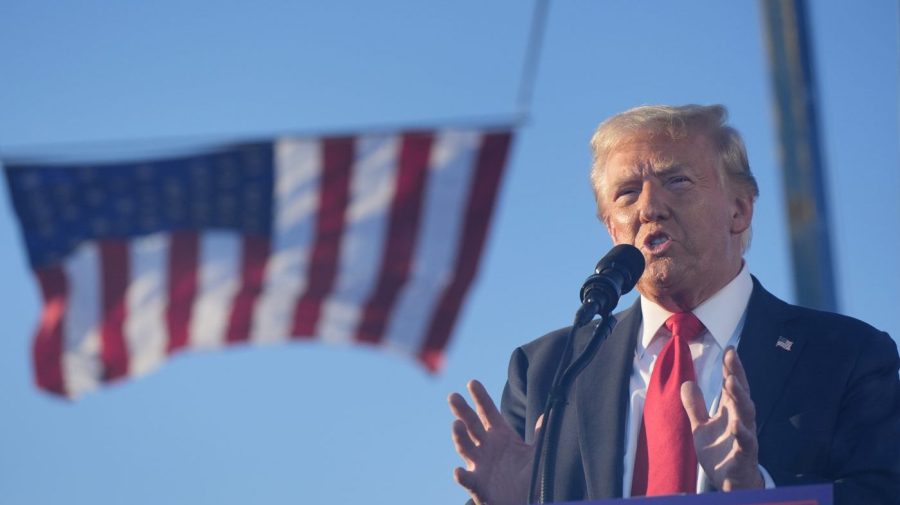Understanding Trump's 10% Tariff Policy

Table of Contents
The Rationale Behind Trump's 10% Tariffs
The stated goals of Trump's 10% tariff policy were multifaceted, primarily aiming to protect American industries and address perceived trade imbalances with other nations. This was a central tenet of his "America First" economic philosophy. The administration argued that these tariffs would:
- Protect American jobs: The argument centered on the idea that foreign competition was unfairly undercutting American manufacturers, leading to job losses. Specific industries targeted included steel, aluminum, and certain agricultural products.
- Reduce the trade deficit: The administration believed that imposing tariffs would encourage domestic production and discourage imports, thereby shrinking the trade deficit.
- Level the playing field: A key justification was that other countries engaged in unfair trade practices, such as subsidies and dumping, and that tariffs were necessary to counteract these practices.
The "America First" economic philosophy underpinned the entire policy. This nationalist approach prioritized American interests above international cooperation, leading to a more protectionist trade stance. The Trump administration frequently cited the need to strengthen American manufacturing and reduce reliance on foreign goods.
Impact on Different Sectors of the US Economy
Trump's 10% tariffs had a varied and complex impact on different sectors of the US economy. Some industries saw benefits, while others suffered significantly.
- Manufacturing: Some segments of the manufacturing sector, particularly steel and aluminum producers, experienced short-term gains due to increased domestic demand. However, this was often offset by increased input costs and retaliatory tariffs from other countries.
- Agriculture: The agricultural sector was particularly hard hit by retaliatory tariffs imposed by countries like China, which significantly reduced exports of key agricultural products like soybeans and pork. Farmers faced decreased profits and market uncertainty.
- Retail: Consumers experienced increased prices on various goods subject to tariffs, leading to increased inflation. This impacted consumer spending and overall economic growth. The increase in prices on imported goods was not always offset by domestic production increase.
The impact on consumer prices and inflation was a significant concern. While some argued that the increased prices were minimal, others pointed to a measurable impact on the cost of living, especially for lower-income households.
International Reactions and Trade Wars
Trump's 10% tariff policy provoked strong reactions from other countries, leading to a series of retaliatory tariffs and escalating trade disputes. These actions significantly impacted global trade relations.
- Retaliatory tariffs: Countries like China, the European Union, and Canada imposed retaliatory tariffs on various American goods, leading to a tit-for-tat escalation. This created uncertainty and disrupted global supply chains.
- Trade disputes: The tariff policy fueled existing trade tensions and initiated new disputes through the World Trade Organization (WTO). This added to global economic instability.
- Impact on global trade relations: The overall impact on global trade relations was negative, leading to increased protectionism and decreased international cooperation. The multilateral trading system was significantly challenged by this protectionist approach.
Long-Term Economic Consequences of Trump's 10% Tariff Policy
The long-term economic consequences of Trump's 10% tariff policy are still unfolding, but several potential effects are evident.
- Reduced economic growth: The trade wars and increased uncertainty dampened economic growth in both the US and globally.
- Decreased international cooperation: The protectionist approach damaged international cooperation on trade and economic issues.
- Impact on future trade negotiations: The policy's legacy continues to influence future trade negotiations, creating a more complex and challenging environment.
- Supply chain disruptions: The implementation of tariffs and subsequent retaliatory actions significantly disrupted global supply chains, leading to increased costs and shortages of certain goods.
Alternative Economic Policies and Comparative Analysis
Alternative economic policies could have addressed trade imbalances and protected American industries without resorting to protectionist measures.
- Negotiated trade agreements: Focusing on negotiating fair trade agreements that address specific concerns, rather than imposing tariffs, could have yielded better results.
- Investing in domestic industries: Investing in domestic industries through targeted subsidies or infrastructure projects could boost competitiveness without the negative consequences of tariffs.
- Strengthening international cooperation: Collaborating with other countries to address unfair trade practices through multilateral forums would be a more sustainable approach than unilateral action.
Comparing these alternatives to Trump's approach reveals a potential for less disruptive and more effective solutions to the economic challenges faced. The sustainability of Trump's protectionist approach was ultimately questionable.
Conclusion
Trump's 10% tariff policy had a significant and multifaceted impact on the US and global economies. While the stated goals of protecting American industries and addressing trade imbalances were ambitious, the policy's consequences were complex and varied, affecting different sectors differently. The resulting trade wars and retaliatory measures damaged international cooperation and contributed to global economic uncertainty. To gain a deeper understanding of the complexities surrounding Trump's 10% tariff policy and its broader economic consequences, further research is encouraged. Exploring resources from reputable economic organizations and academic institutions will provide a more comprehensive picture of this significant economic event and its lasting implications for global trade.

Featured Posts
-
 Ru Pauls Drag Race Season 17 Episode 13 Preview Drag Baby Mamas A Family Affair
May 11, 2025
Ru Pauls Drag Race Season 17 Episode 13 Preview Drag Baby Mamas A Family Affair
May 11, 2025 -
 Mtv Movie And Tv Awards Cancelled For 2025 Official Confirmation
May 11, 2025
Mtv Movie And Tv Awards Cancelled For 2025 Official Confirmation
May 11, 2025 -
 Bctv Daily Dispatch Superman Daredevil Bullseye And 1923 News
May 11, 2025
Bctv Daily Dispatch Superman Daredevil Bullseye And 1923 News
May 11, 2025 -
 Is Henry Cavill The Next Nova Examining The Latest Marvel Rumors
May 11, 2025
Is Henry Cavill The Next Nova Examining The Latest Marvel Rumors
May 11, 2025 -
 Sycamore Gap Tree Felling Two Men Found Guilty
May 11, 2025
Sycamore Gap Tree Felling Two Men Found Guilty
May 11, 2025
